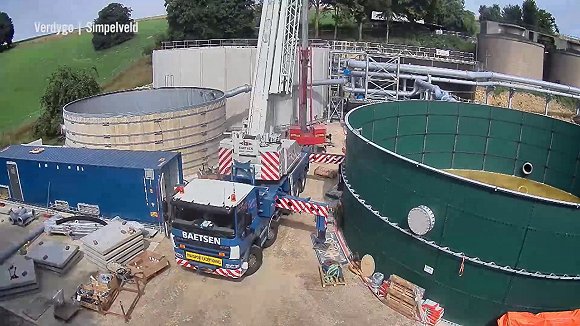Utility Waterschapsbedrijf Limburg has installed two wastewater treatment plants in the Netherlands worth around €10.7 million.
Verdygo, the private parent company of Waterschapsbedrijf Limburn, joined forces with construction company Strukton, multi-disciplinary engineering consultant Royal HakoningDHV and wastewater contractor Aan de Stagge to deliver the installation of two wastewater treatment plants in Simpelved and Roermond. This included the construction of modules above ground, with the ability to disassemble and move components. This means that operators can easily adapt to varying environments, such as the increase or decrease of influent loads, a change in temperature or of water management policies, for instance, the tightening of discharge regulations.
The Simpelved site is also being used to conduct experiments and try out new materials; for example, the four large tanks being used have been built using different materials: coated steel, stainless steel, concrete and wood. A self-healing concrete has been used for one of the tanks; an initiative in cooperation with Delft Technical University. By mixing the concrete with calcite-precipitating bacteria, which can survive around 200 years, a limestone precipitate will form in any cracks that may appear, increasing the operational lifetime of this tank.
Following the success of this project, Verdygo BV and Strukton and recently signed a letter of intent for cooperation in the Middle East, and are said to be working together on a variety of projects.
Theo Bovens, Governor of the Province of Limburg said: “Waterschapsbedrijf Limburg is showing how innovation in primary systems such as sewers and treating water not only pays off, but can capture the imagination."
See below a video a timelapse of the project construction.





